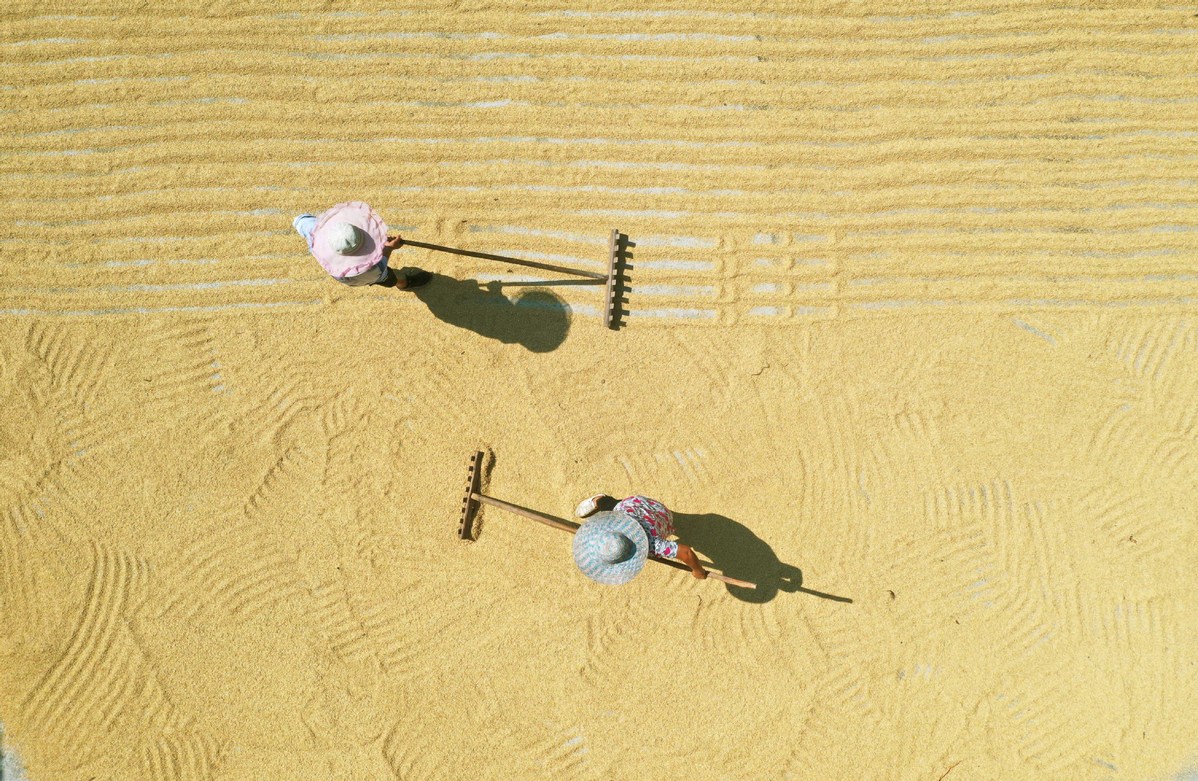Technology halves growth cycle for rice
By ZHAO YIMENG | China Daily | Updated: 2021-08-28 09:12

China has halved the rice growth cycle to around 60 days in a nursery using innovative technology for crop breeding, said Yang Qichang, a researcher of the Institute of Urban Agriculture at the Chinese Academy of Agricultural Sciences.
Yang, also chief scientist of the nursery team at the institute, said the experimental rice provided by the China National Rice Research Institute were dwarf varieties suitable for vertical cultivation on multi-story shelves.
The experiment was conducted with LEDs providing the best lighting conditions in different growing periods.
Cultivation trays supplied targeted nutrients based on growing needs while factors such as temperature, humidity and carbon dioxide concentration were under precise control.
Two of the six dwarf varieties were harvested in 63 days, nearly half of the usual 120-day growing period on farmland, and yielded 9.78 metric tons per hectare.
Crops can only be harvested two to three times a year on farmland, while the nursery is expected to produce six generations of crop.
"This technique greatly shortens the breeding cycle and improves cultivation efficiency, setting an example for other crops," Yang said.
Qian Qian, an academician of the Chinese Academy of Sciences and the deputy director of the rice research institute, said efficient breeding is key to ensuring national food security.
"It takes several generations of propagation to breed excellent new varieties, lasting years or even dozens of years. The technique in the nursery breaks the bottleneck of time and space," Qian said.
The controlled environment and nutrients in the nursery can dramatically promote the photosynthesis of crops and their growth, and without being affected by land, space, climate conditions and seasonal changes, the system can be built near the breeding institutes, Yang said.
"In the future, it will be possible to use factory methods to produce grain and cities may see large numbers of food production factories," he said.
Given the scientific support from the central government and breakthroughs in LED lighting technology, the development of nurseries in China started late but developed quickly.
China has established an agricultural demonstration park in Romania and a smart farm base in the United Kingdom to further develop the technique, he added.
























